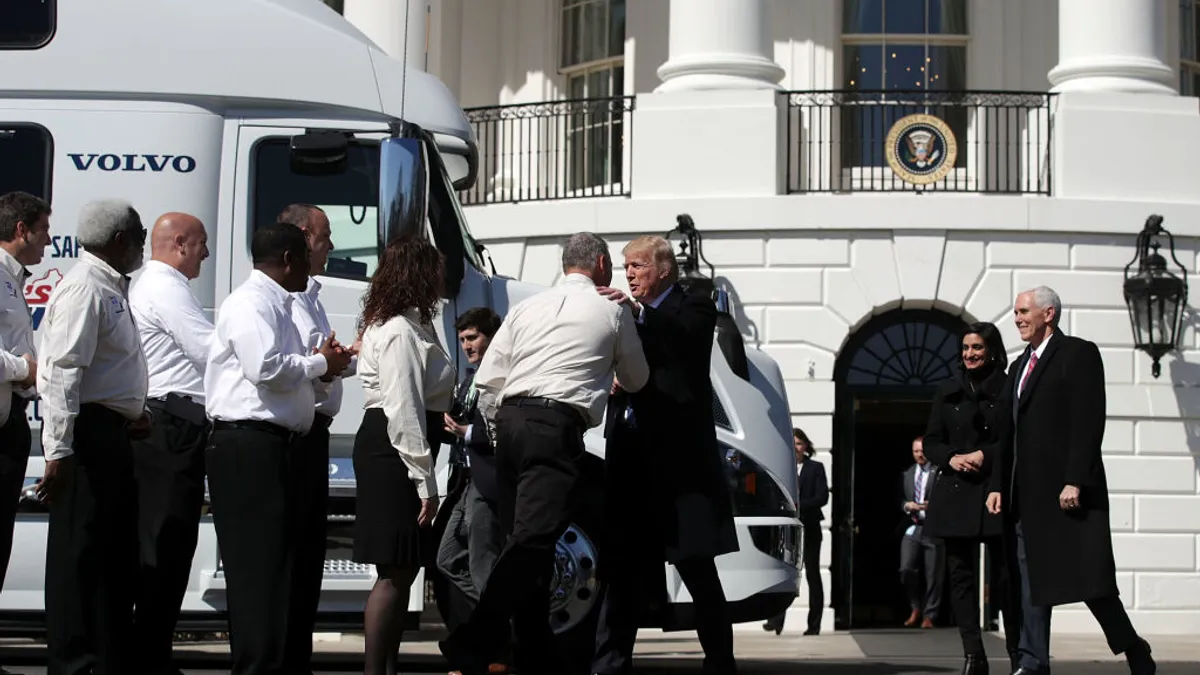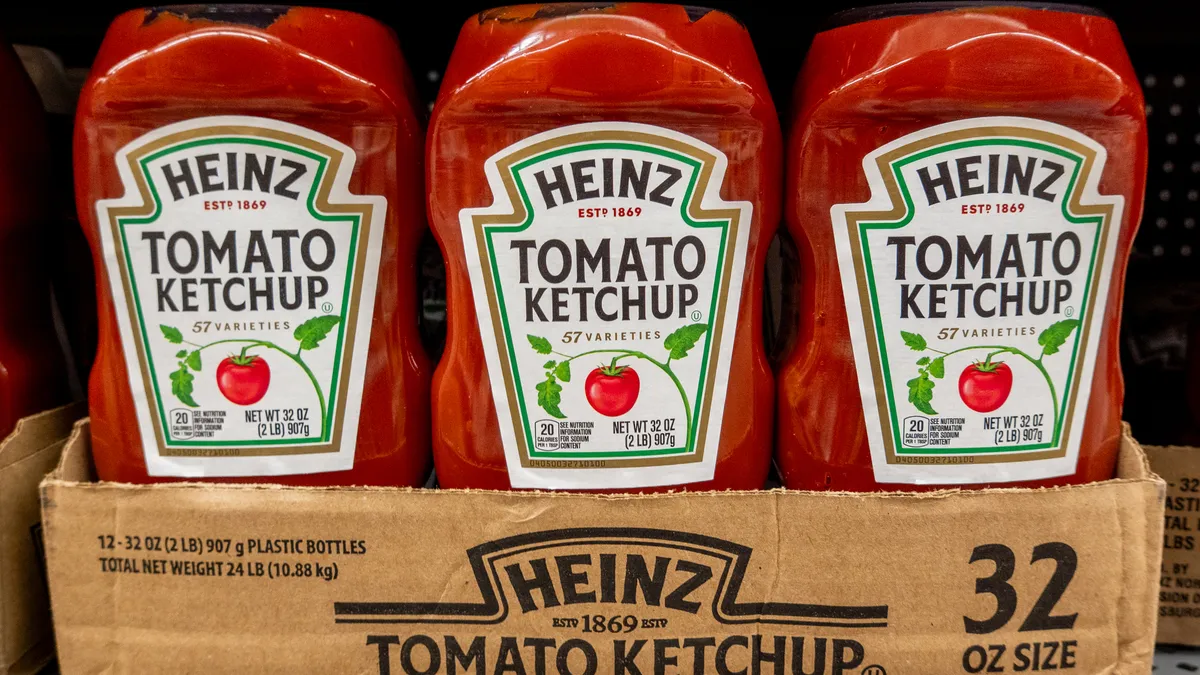When President Trump recently got behind the wheel of a semi at the White House, the nation breathed a sigh of relief that the truck wasn’t moving. While that trucking group discussion with the president focused on healthcare, the industry has many other issues in the forefront. A controversial one? Self-driving trucks.
Uber's Otto and a handful of other companies are developing technology to bring driverless trucks to the roadways, with Otto already taking its first U.S. autonomous truck load, hauling Budweiser beer 120 miles from Fort Collins to Colorado Springs in October, 2016.
Should truckers be worried about losing their jobs? What has to happen before empty cabs take over the freeways? A self-driving vehicle isn’t novel. The airline industry has used autopilot to help planes take off and land for years. And some trains use automatic train operation software as a safety enhancement. Even cars have automated safety features to keep them in the right lane and help prevent crashes.
As for autonomous trucks? “It’s not a threat, but it’s on the radar. It’s not keeping people up at night,” said Truckstop.com account executive Josh Main, just after attending a session on autonomous trucking at a Transportation Intermediaries Association meeting in Las Vegas this month.
Technology and regulation: Challenges for autonomous trucks
Given the projected truck driver shortage, autonomous trucks are an industry opportunity, says Jared Butts, senior manager of disruptive automation at Hershey. “It’s amazing to see how it recognizes stationary and moving objects around it, and makes decisions on how it adjusts to the world,” he said, commenting on a recent ride-along on an Otto truck in the San Francisco Bay Area.
It’s a matter of time before these autonomous vehicles will be on the road. He says there are two big hurdles to overcome: technology and regulatory issues. In terms of technology, one question for him is how well the trucks can handle weather issues like snow.
Should truckers be worried about losing their jobs? What has to happen before empty cabs take over the freeways?

Supply Chain Dive
Another potential concern, if there is no driver or pilot in the cab, is how a truck would know when a state declares a road closed. “That happens all the time in the Midwest,” says Elliot Ballen, operations manager at L&A Transport. The truck would need to receive a signal from road sensors, the state or the dispatcher, to shut the truck down or reroute it.
With the federal administration’s emphasis on rebuilding the country’s infrastructure, one option is to add smart sensors to the nation’s roadways, relying on connected autonomous vehicles to get signals from about closed roads and constructions. That would allow trucks’ computers to reroute them. Ohio is starting to do this already, pledging $15 million this year to add fiber-optic cable networks and sensor systems to help with autonomous vehicles.
Regulatory laws to change
State regulators will need to feel comfortable allowing these trucks on the road without someone behind the wheel, and will need to change some laws. Yet, Butts doesn’t see the challenges as major obstacles. “Things need to be mapped out, but I have total confidence it will get there,” he says.
Driver laws would need revision if adding a pilot to the truck, to gain the efficiencies promised by self-driving trucks. Currently, laws specify that the driver can operate or be in the truck no more than 11 hours a day, long a controversial issue.
But one advantage of an autonomous truck is the ability to drive longer periods of time, not stopping for bathroom and rest breaks. Should the truck use more than one pilot so they can alternate shifts? Can the pilot sleep while the truck is moving? Or must the 11 hour shift be extended so the pilot can spend more time in the moving truck? These are all issues to work out.
What about semi-autonomous driving?
Experts believe there’s still a place for drivers in the autonomous trucking world, especially in the early implementation. Semi-autonomous trucking is a more reasonable option.
“When you completely remove the human piece, that’s where it gets risky,” Main says. The human driving portion is best for the local part of the trip, handling the first and last mile of deliveries, as opposed to being there for the long haul.
One advantage of an autonomous truck is the ability to drive longer periods of time, not stopping for bathroom and rest breaks.

Supply Chain Dive
Butts, however, sees the driver’s involvement phasing out over time. It makes sense for an unmanned truck to take a load directly from point A to point B, without making multiple stops. If it was going from terminal to terminal, like to an industrial park, and didn’t need to back up into a dock or travel in major traffic, that is more reasonable. There are complexities when driving in a city, and driving under more technical, crowded conditions, versus an open highway.
Even with a driver in the truck, that role can change. Typically loading and unloading cargo are the driver’s responsibility, in addition to accounting for the freight. That could still be done with a pilot, or by assigning that task to a person at the dock.
Protecting the cargo
If there’s no driver on board, trucking companies will worry about protecting the cargo and making sure the trucks are safe at all times.
Currently, trucks carrying hazardous materials (which includes liquids like alcohol and some flammable juices) must stop for a load check every few hours to make sure there’s no leak. There are other reasons a human-driven truck might be required to stop, like if the driver jammed on the brakes or stopped short. This is to make sure the load is still balanced. Without a driver, it can be harder to verify that the load hasn’t shifted, as a shifting load can making driving more dangerous and can change the brakes’ responsiveness.
When you completely remove the human piece, that’s where it gets risky

Josh Main
Enterprise Account Executive, Truckstop.com
An unattended truck’s cargo could be stolen after pulling into a truck stop for refueling, for example, or if the truck stopped on the roadway because of a technical issue. One option trucking companies would have is to pool money for security personnel at truck stops.
Yet, even then, trucks may not need to make as many pit stops for refueling, suggests L&A Transport's Ballen. Trucks hold close to 300 gallons of fuel, getting about seven miles to the gallon with a driver. If they’re autonomous, the truck might get 10 miles a gallon, making it across the country without refueling, so that’s less of an issue.
Less commonly considered autonomous trucking issues
With autonomous trucks, “a lot of small towns won’t be happy,” says Ballen. Small towns rely on revenue from trucking violations, ranging from speeding infractions to burned out lightbulbs to tires without enough tread. “It’s a big moneymaker for all the states.”
How does a police car pull over a truck with no driver? If there’s no driver, is the technician or dispatcher held accountable? Or do all violations just go against the trucking company? Currently drivers have to pull over when a light goes out or a mud flap comes off. “Maybe the dispatcher or truck will call the equivalent of Onstar, and a technician would come out there, and provide road service to fix it,” Ballen says. But that assumes that sensors are in place to know that there’s an issue.
These are all details to work through, and none can deny many issues abound before the technology's full deployment. Just like cell phones have changed from boxes directly wired into a car, to small devices that act as mini computers, autonomous trucks will likely make drastic changes as they go through the development, testing and regulatory processes. Depending on who you ask, this is reason for either hope or skepticism.





















